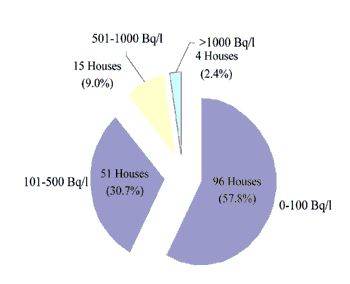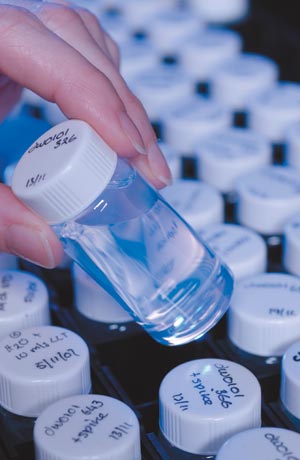| 2004 |

|
YEAR BOOK |
Radiological Protection Institute of Ireland
|
Radon in private drinking water supplies in County Wicklow
|

A European Commission Recommendation [EC, 2001/928/Euratom] proposes that surveys should be undertaken in Member States to determine the scale and nature of exposures caused by radon in domestic drinking water supplies. The Commission recommends 1000 Bq/l (becquerels per litre) as the radon concentration in private drinking water above which remedial action to reduce the concentration should be considered. To this end, a pilot study of radon in drinking water in County Wicklow was carried out in 2002. County Wicklow was selected for the study on the basis that high radon concentrations in air have been predicted in a significant number of dwellings in the County, the underlying geology is predominantly granite with an anticipated elevated uranium content, and there is a high usage of drinking water from private supplies, estimated at between 1200 and 5000.

The study of radon in drinking water in Ireland is ongoing and the Institute now offers a routine service for this analysis.
Contact: Dr Savio Sequeira,
Radiological Protection Institute of Ireland, 3 Clonskeagh Square, Dublin 14; Tel: 01-2697766;
E-mail: [email protected] ; Web: www.rpii.ie